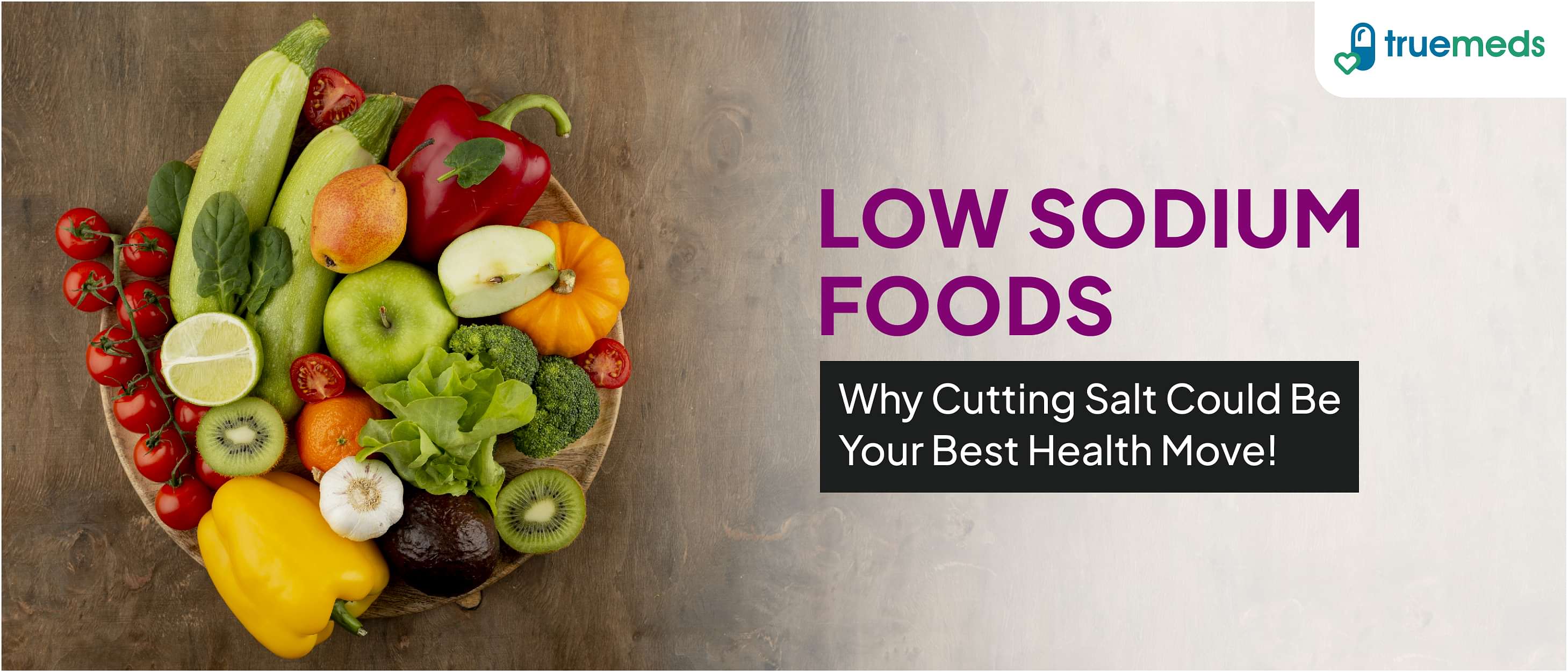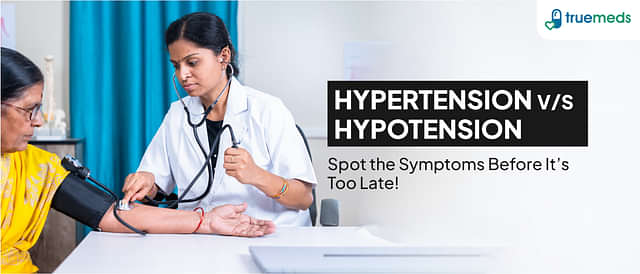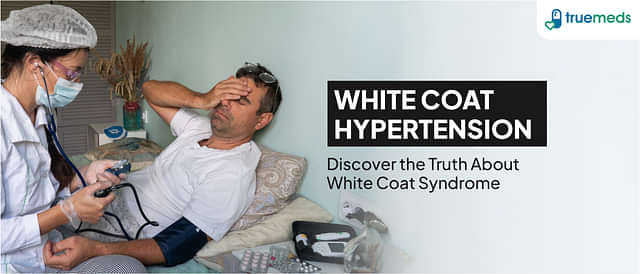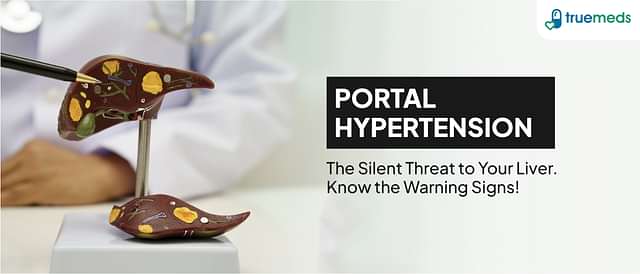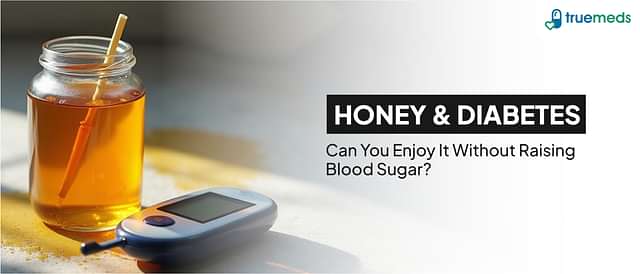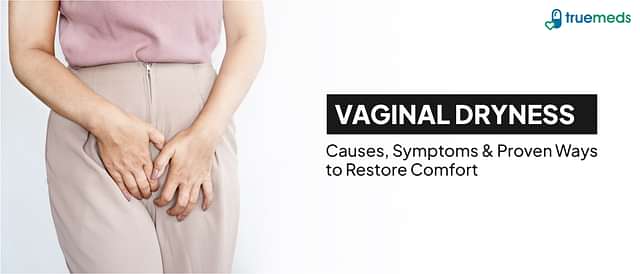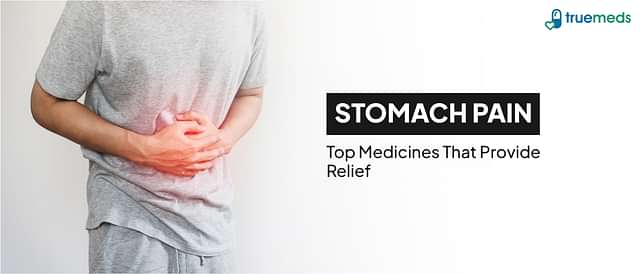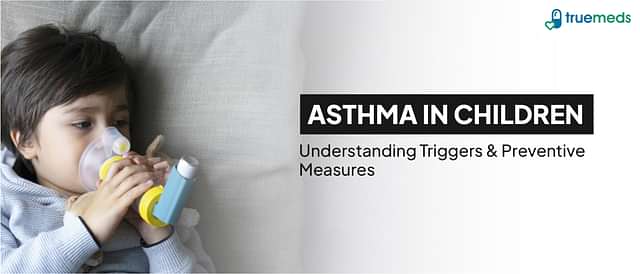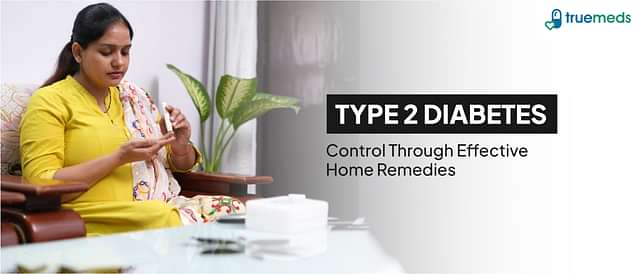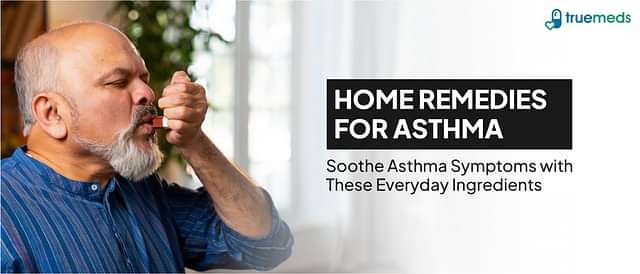Low Sodium Foods to Eat with its Benefits
Last updated on : 21 Mar, 2025
Read time : 9 min
What to know about Sodium?
Our bodies require a lot of sodium to function properly. However, too much of it can be harmful to your heart. That’s why sticking to low sodium foods is your best bet. Sodium is a vital mineral that plays a role in a variety of body functions, including cellular function, fluid regulation, electrolyte balance, and blood pressure regulation.
The concentration (osmolarity) of bodily fluids is used by your kidneys to manage the quantities of this mineral, which is essential for survival.
Most foods include sodium, though entire meals including vegetables, fruits, and poultry have significantly lower levels. Plant-based foods, such as fresh produce, have lower salt levels than animal-based meals, such as meat and dairy.
Processed and packaged foods, such as chips, frozen dinners, and fast food, are high in sodium because salt is added during processing to increase flavour. Adding salt to food while preparing meals in the kitchen and as a seasoning before eating is another major source of sodium. A low sodium diet restricts the consumption of salty foods and beverages.
Low sodium foods are commonly recommended by healthcare professionals to manage illnesses including high blood pressure and heart disease. Sodium intake is normally restricted at less than 2–3 grammes (2,000–3,000 mg) per day, while there are exceptions. A teaspoon of salt contains approximately 2,300 milligrammes of sodium.
How do Low Sodium Foods affect the Human Body?
Overdosing on sodium can result in elevated levels of the mineral in the blood. An increase in blood volume is caused by sodium influx into the bloodstream. Hypertension, the medical term for high blood pressure as a result of this increased blood volume, can develop.
A person with uncontrolled hypertension is at greater risk of developing the following health issues, according to the FDA.
- stroke
- heart attack
- heart failure
- blindness
- kidney disease
It is possible to lower a person’s blood pressure or avoid high blood pressure by including low sodium foods in a diet
Benefits of a Low Sodium Diet
1. It maintains electrolyte balance
Maintaining electrolyte balance is critical to your body’s pH equilibrium and the normal functioning of your muscles. One of the electrolytes’ key components is sodium. Low sodium foods help in maintaining electrolyte balance.
2. It keeps you energized all day long
You may keep your energy levels up by eating low sodium foods. The hardening of arteries caused by a high salt diet causes an increase in heart rate because of a lack of blood flow. As a result, you’re easily fatigued. However, a low sodium diet can spare your arteries from clogging and make you feel more energised and less exhausted.
3. A low sodium diet also reduces your risk of stroke
The brain’s blood supply is the primary cause of stroke. Because sodium regulates blood flow in the body, excess or deficiency can be bad for you. When it comes to sodium benefits, 4 to 5 g of salt is the ideal quantity for a healthy individual. However, we tend to overlook the fact that other foods we consume, such as eggs, shellfish, almonds, flaxseeds, pumpkin seeds, and green leafy vegetables, also contain high levels of salt. As a result, we need to keep an eye on our low sodium foods.
4. Blood pressure
To put it another way, the amount of water that enters the body through sodium increases, increase in blood volume. As a result of the increased amount of blood, the circulatory system is overworked, resulting in high blood pressure. To keep blood pressure in the normal range, it may be necessary to include low sodium foods in your diet.
5. Kidney disease
The kidneys play a key role in regulating salt levels in the body. Excess salt and fluid can build up in the body if the kidneys aren’t working properly. High blood pressure and swollen ankles might result from this accumulation of fluid. In this case low sodium benefits by maintaining salt levels.
6. Liver disease
Hypertension and a buildup of fluid in the abdomen, known as ascites, can occur in people with liver disease. Cirrhosis and other liver illnesses may necessitate a low sodium diet to prevent or manage ascites.
7. It protects your vision
Having high blood pressure is extremely rare if you eat a low sodium diet. Blood arteries are damaged by high blood pressure, which can lead to blindness.
8. May Improve diet quality
It’s no secret that a lot of bad things we eat are loaded with sodium. In addition to being salty, convenience foods like fast food, prepackaged foods, and frozen meals are often heavy in fats and calories that aren’t healthy. Obesity, diabetes, and heart disease have been related to eating these items regularly. Some of these salty snacks can be avoided when on a low sodium diet, which can enhance your overall diet quality.
9. Make your bones stronger
The amount of calcium drawn from your bones is controlled by salt. Bone health and the prevention of osteoporosis can only be achieved through adequate calcium intake. A high-sodium diet can cause calcium loss, resulting in weak bones so it is necessary to include low sodium foods in a diet.
10. Reduce your chances of developing stomach cancer
Helicobacter pylori is a type of bacteria. This bacteria is capable of surviving in your stomach. The H. pylori bacteria thrive in environments with a lot of salt. The bacteria is a significant contributor to stomach cancer risk. Hence low sodium benefits in this condition.
Low sodium foods to eat
- Fresh Fruits and Vegetables: Shop for a wide variety of fruits and veggies.
- Fresh fruits, such as apples, oranges, and bananas, can be included.
- Spinach, carrots, or broccoli are all examples of fresh veggies.
- no additional butter or sauce added to the frozen vegetables
- Preserved veggies that are low in sodium or do not contain any additional salt
- Vegetable juice with a low salt content
- Non-sugar-added frozen, canned, or dried fruits
- You can reduce the sodium content by rinsing canned vegetables.
- Bread, Cereals, and Other Grain Products: You can locate items with a lower salt content by comparing the nutritional information provided on the label.
- Rice, quinoa, and barley are examples of whole grains.
- Pasta and couscous made from whole wheat or whole grain
- Oatmeal or shredded wheat, for example, are healthy whole-grain morning cereals that don’t have any added sugar.
- Low sodium foods like chips and pretzels, or unsalted popcorn
- Bread, bagels, English muffins, tortillas, and crackers made with whole-grain ingredients.
- Don’t add salt to brown rice or whole-grain pasta when cooking.
- Protein Foods: Consume fresh or frozen meats as low sodium foods instead of pre-packaged choices. Sulfur is added to several types of meat, poultry and fish products.
- Fish and shellfish that is fresh or frozen
- Non-marinated breasts of chicken and turkey
- Boneless, lean beef and pork chops
- The unsalted nuts and seeds
- Tofu is made from a variety of dried legumes and peas such as kidney beans, split peas, black-eyed peas, garbanzo beans, and lentils.
- No salt added or low sodium cans of beans
- Eggs
- Rinse canned beans to eliminate excess sodium before using.
- Dressings, Oils, and Condiments
- Use ingredients that are low in salt or have none at all when cooking.
- No trans fats and reduced saturated fats in unsalted margarine and spreads (soft, tub, or liquid).
- Oils from vegetables (canola, corn, olive, peanut, safflower, soybean, or sunflower)
- Salad dressing with low sodium, or oil and vinegar
- Ketchup with low sodium or “no salt added”
- Picante sauce or salsa with low sodium
- Seasonings: To flavour your cuisine, use these low sodium foods like seasonings instead of salt.
- Herbs, spices, or seasoning blends that aren’t salty
- veggies, such as garlic, onions, and peppers, chopped
- Juices of lemon and lime
- Ginger
- Potatoes and potassium: As a result, Gloede says, baked and sweet potatoes naturally contain low sodium and high potassium. For those who consume high levels of potassium, reduce the amount of salt in your diet (although you probably should).
- Dairy products: Yoghurt is an example of low sodium food. You can avoid extra sugars by sticking to plain yoghurt and avoiding flavoured ones, such as strawberries. Keep in mind that plain yoghurt does not have to be tasteless. You may make a low sodium diet dessert that tastes just as good as ice cream or sherbet by adding some fruit.
Sodium restricted diet
More than 70% of sodium in the diet comes from prepared or packaged foods, according to the FDA. Pastries and cereal may also contain high levels of sodium, even if they don’t taste salty.
If you’re on a low sodium diet, the NKF recommends avoiding the following:
- Tostadas, corn chips, and pretzels fall under this category, as do salty snacks.
- Canned and frozen dishes should be avoided as a quick and easy meal option.
- Examples of high-sodium sauces include Teriyaki, soy sauce, and barbecue sauce.
- Cheese, buttermilk, and canned soup are examples of processed foods.
- The curing process is used for cured foods such as bacon, ham, and pickles.
- Pastrami, sausage, and corned beef are all examples of lunch meats.
- You may also want to be careful when dining out if you’re on a low-sodium diet. People can inquire about a meal’s salt content before they place an order. They might also request that the dish be prepared without salt and that salad dressings or sauces be served separately from the main dish.
For the all latest coupons and offers on the medicines, follow us on Instagram and Facebook
Disclaimer
Our healthcare experts have carefully reviewed and compiled the information presented here to ensure accuracy and trustworthiness. It is important to note that this information serves as a general overview of the topic and is for informational purposes only. It is not intended to diagnose, prevent, or cure any health problem. This page does not establish a doctor-patient relationship, nor does it replace the advice or consultation of a registered medical practitioner. We recommend seeking guidance from your registered medical practitioner for any questions or concerns regarding your medical condition.
Popular Articles
Recommended Articles
Recent Articles
Top-Selling Medicines:
...View more
Top-Selling OTC:
...View more
Subscribe
Registered Office Address
Grievance Officer
Download Truemeds

Contact Us
Our customer representative team is available 7 days a week from 9 am - 9 pm.
v3.7.5
Our Payment Partners









